[10000印刷√] heterogeneously dense breast tissue cancer risk 318212-Heterogeneously dense breast tissue cancer risk
Average Risk Women (Only age and BRCA1 and BRC mutations increase risk more Breast density is a radiologic phenomenon different from the common notion of density as weight per unit of volume Breast density is not discernable by palpation but rather Having dense breasts â€" that is, relatively little fat in the breast and more glandular and connective tissue, as seen on a mammogram â€" is one of the strongest known risk factors for breast cancer

Breast Density And Mammogram Reports Dense Breast Tissue
Heterogeneously dense breast tissue cancer risk
Heterogeneously dense breast tissue cancer risk-The cancer risk for the 40% of women with heterogeneously dense breasts is only about 12 times greater than women with nondense breasts and The risk for the 10% of women with extremely dense breasts is only about 2 times greater than women with non dense breasts Therefore, breast density is not a major cancer riskA letter is sent to all Spectrum Health mammography patients with their test results notifying them if they have "dense breast tissue" Why is breast density important?




Are You Missing The Added Revenue Of Dense Breast Imaging Radiology Oncology Systems
Yes, women with dense breasts have a higher risk of breast cancer than women with fatty breasts, and the risk increases with increasing breast density This increased risk is separate from the effect of dense breasts on the ability to read a mammogramThe risk of breast cancer is four to five times greater in women who have increased density in more than 75% of their breast tissue, than in women with little or no density in the breast One third of all breast cancers are found in women who have increased breast density in over 50% of their breast tissueIt now appears that women with heterogeneously dense breast tissue (category C) have about a 12 times greater risk of developing breast cancer than women with average breast density Women with extremely dense breast tissue (category D) have about twice the risk
The other risk of dense breasts Speaking of clear pictures, the other issue with dense breasts is that they make it more difficult to spot cancer on mammograms That's because dense breast tissue and cancerous tissue both show up as white areas on mammograms Women with dense breasts on mammogram have a risk of breast cancer that is about 1 1/2 to 2 times that of women with average breast density Unfortunately, dense breast tissue can also make it harder to see cancers on mammograms A number of factors can affect breast density, such as age, menopausal status, the use of certain drugs (including Breast cancer is most frequently diagnosed in women aged 5564 years 2 In addition to female sex and older age, nonmodifiable risk factors for breast cancer include certain inherited gene mutations, a family history of breast cancer, a personal history of breast cancer, dense breast tissue, certain benign breast conditions (eg
In 2 studies, 36,37 the pooled relative risk of breast cancer was increased in women with greater breast density (ie, pooled odds ratio for heterogeneously dense breasts, 281 95% CI, ; Oct 7, 10 Women with an early form of breast cancer are at higher risk for recurrence if their breast tissue appears dense on mammograms, a study shows The study also shows the risk ofDense breast tissue increases the risk for developing breast cancer and the consideration of additional screening after a mammogram Women at "high risk" for breast cancer, most often because they have a diseasecausing mutation (such as BRCA1 or BRC ), should begin screening even younger – at least by age 30 and with the inclusion of




Patient Questions And Answers Densebreast Info Inc




The Evolution Of Breast Density Scales And Algorithms Densitas
Women whose breasts appear dense on mammograms have a higher risk for some aggressive breast cancers One of the strongest known risk factors for breast cancer is high breast density — that is, relatively little fat in the breast and more connective and glandular tissue, as seen on a mammogramHaving dense breast tissue might increase your risk of getting breast cancer Women who have dense breast tissue have a slightly higher risk of breast cancer compared to women with less dense breast tissue It's unclear at this time why dense breast tissue is linked to breast cancer risk Meanwhile, lessdense, fatty tissue was tied to a lower probability of this form of the disease across all age groups Research has previously correlated breast density with invasive cancer risk among women age 4065, but little data exists on the elder population, experts from more than a dozen institutions detailed Thursday




Breast Density What Is It And What Does It Mean For Me Breast360 Org The American Society Of Breast Surgeons Foundation




Breast Density Are You Informed Imaging Technology News
Having dense breasts isn't as big a risk factor as inheriting a genetic mutation like BRCA1 or BRC, but it's not insignificant Studies show that if you have heterogeneously dense If you are considered to have heterogeneously or extremely dense breast tissue, the image looks similar to a snowball — all white This is important because the things a mammogram is trying to screen for, such as cysts, calcifications and cancer, also appear white on the mammogram imageTissue is dense Dense breast tissue is very common and is not abnormal However, dense breast tissue may make it harder to find cancer on a mammogram and




Understanding Breast Density Fairfield Medical Center




Breast Cancer Faq 8 Things You Should Know About Getting Your First Mammogram Daily Sabah
Some studies have shown that women with extremely dense breasts have a four to six times greater risk of developing breast cancer than those with mostly fatty breasts Cancer appears to develop in Heterogeneously dense breasts is a term used in mammography to describe breasts with a higher percentage of glandular and supportive tissue than fat It occurs in 40% of women and while normal, can make it more difficult to detect breast cancer on mammography It's estimated that more than 40 percent of US women have dense breast tissue, which alone increases the risk of breast cancer Moreover, dense tissue can mask cancers on the mammogram, making screening more difficult As a result, 30 US states mandate that women must be notified if their mammograms indicate they have dense breasts




Are You Missing The Added Revenue Of Dense Breast Imaging Radiology Oncology Systems




The Connection Between Dense Breasts And Breast Cancer Patricia Bowden Luccardi
Dense tissue appears white on a mammogram Lumps, both benign and cancerous, also appear white Dense breasts make it more difficult for doctors to spot cancer on mammograms So, mammograms can be less accurate in women with dense breast due to masking Masking occurs when breast tissue obscures a cancer Some breasts are mostly fat (fatty breasts) and some breasts are mostly breast and connective tissue (dense breasts) Mammograms of dense breasts are harder to read than mammograms of fatty breasts Learn more about breast density and mammography Breast density and breast cancer risk Women with dense breasts are 45 times more likely to getBreast density refers to the amount of glandular and fibrous tissue Dense breasts have mostly glandular tissue, with just a little fat tissue A woman's breast density can change through her life There are four types of breast density, from most to least dense Extremely dense Heterogeneously dense




Being Dense Breastdensity Auf Twitter Radiologists Determine The Category Of Breastdensity Women Who Are Heterogenously Or Extremely Dense Are Considered To Have Densebreasts Women Who Have A Mammogram Should Be Routinely Informed



3
More than half of the women with extremely dense or heterogeneously dense breasts had low to average BCSC risk scores 525% of women with extremely dense breasts had a BCSC score between 0% and 166%; Women with a fiveyear risk of 25 percent or higher and heterogeneously or extremely dense breasts — 21 percent of all women with dense breasts — were also the most likely to have interval cancersThe interval cancer rate for this group was 072 to




Homogeneously Dense Breast Tissue Radiology Case Radiopaedia Org




Breast Imaging Big Sky Diagnostic Imaging
The relative risk for cancer in women with heterogeneously dense breasts compared with the average woman is approximately 12, and the relative risk for cancer in women with extremely dense breasts compared with the average woman is approximately 21 Data suggest that the masking effect of dense breasts on can Women with dense breasts have been shown to have a four to sixfold increased risk of developing breast cancer; Hetereogeneously Dense Breast Increase for Breast Cancer Having dense breast affects your risk for breast cancer in two ways Breast density can make it difficult to see underlying cancer on your mammogram Thus breast density presents a risk factor for breast cancer




Comparing Maria M4 Detection For A Heterogeneously Dense Breast With Download Scientific Diagram




Example Images Of The Four Breast Density Composition Categories Download Scientific Diagram
Dense tissue appears white on a mammogram while fatty tissue appears black Breast cancer on a mammogram appears as a white spot, which is why it can be more difficult to see when the background is white as it is with dense tissue Breast density also slightly increases your risk for breast cancer But dense breast tissue alone is not a major In a metaanalysis of studies that evaluated breast density as an independent risk factor for breast cancer, the relative risk associated with dense breasts was 292 for breasts that were 50%–74% dense and 464 for breasts that were 75% or more dense ( 18 )Women with dense breasts have a higher risk of getting breast cancer What Are the Parts of the Breast?




Making More Sense Of Breast Density Acp Internist



The Facts About Breast Density Radiology Associates Of Hartford
A later analysis showed that women most at risk for interval cancer were women with extremely dense breasts and Gail model 5year breast cancer risk of >167% or women with heterogeneously dense breasts and 5year risk of >250% (9) With ongoing research, there are known risk factors for breast cancer Here are a few Being overweight, especially after menopause Fatty tissue is the main source of estrogen after menopause and higher fat composition means higher levels of estrogen Diet There is ongoing research into links between diet and breast cancer riskA woman's breast has three kinds of tissue— Fibrous tissue holds the breast tissue in place Glandular tissue is the part of the breast that makes milk, called the lobes, and the tubes that carry milk to the nipple, called ducts




Faq For High Risk Women Women With Dense Breast Tissue Radiology Ltd




Breast Density Testing In Rochester Ny Elizabeth Wende Breast Care
Breast cancer mortality is reduced by the detection of small, nodenegative cancers 1,2 But, for women with dense breasts, the sensitivity of mammography is limited due to the masking effect of dense tissue 3 In addition, dense breast tissue is one of the strongest and most common independent risk factors for breast cancer 46 As such, it is critical to understand the significance of breastWomen who have dense breast tissue have a higher risk of breast cancer compared to women with less dense breast tissue It's unclear at this time why dense breast tissue is linked to breast cancer risk Dense breast tissue also makes it harder for radiologists to see cancer On mammograms, dense breast tissue looks white Dense breasts can increase cancer risk Not only does dense breast tissue make cancer more difficult to detect in the early stages — it might also predispose you to developing cancer "Comparing the least dense to most dense breasts, it increases your risk of developing breast cancer by four fold," Elezaby notes




Ge Healthcare Quick Facts About Breast Density




Cancer And Breast Density What Are Doctors Withholding The Japan Times
For women who have heterogeneously dense breasts (category C), the risk of cancer is about 15 times that of a woman with scattered fibroglandular density (category B) These estimates are for women in general, though, and they don't take other personal risk factors into account Is heterogeneously dense breast tissue dangerous? Heterogeneously dense Most of the breast is dense tissue with some areas of fat Tumors and masses show up as white spots just like dense tissue
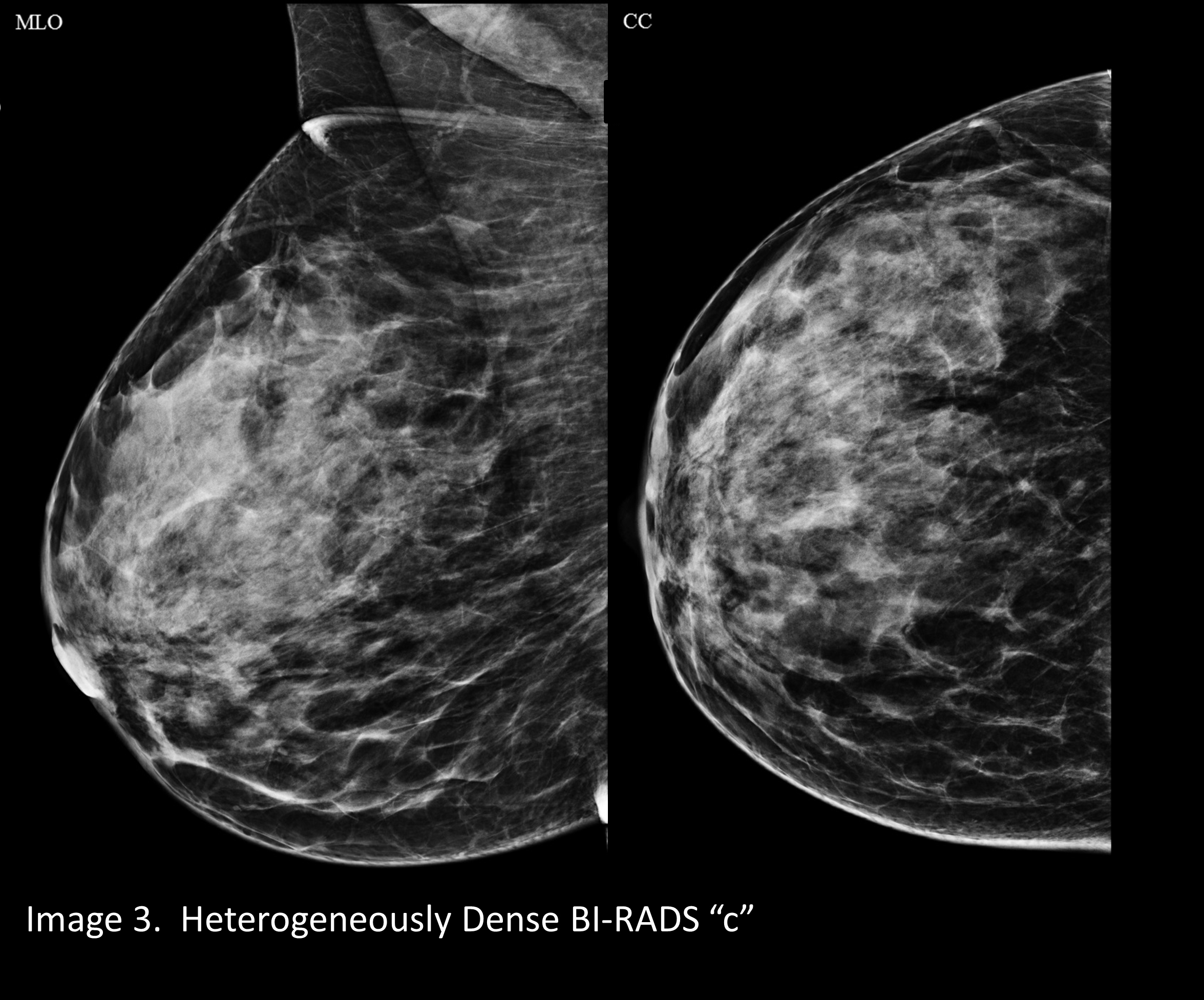



Your Patient Got A Dense Breast Notification With Her Mammogram Report What Are You Supposed To Do Christianacare News




Breast Density A Patient Guide Ppt Video Online Download
Don't panic Dense breast tissue is not cancer The results are merely informing you that, like 40 percent of American women, your breast tissue is particularly fibrous This does, however, make it more difficult for a mammogram to see through the entire breast Dr Kirtly Parker Jones explains dense breasts in further detail and what alternative screening methods might Among women with dense breasts, the risk of developing an interval cancer was greatest in those with extremely dense breasts (at least 75 percent of breast tissue is dense) and a 5year risk of 167 percent or more and in those with heterogeneously dense breasts (more than half of the tissue in their breasts is dense) and a 5year risk of 25 percent or more There are several risk factors associated with dense breast tissue, including Age A 18 study in the journal Cancer Epidemiology, Biomarkers and Prevention found that younger females tend to




The Problem With Mandatory Breast Density Reporting Laws Scienceblogs




Digital Mammography And Computeraided Diagnosis 1 Breast Cancer
Dense breast tissue is very common and is not abnormal However, dense breast tissue can make it harder to find cancer on a mammogram and may also be associated with an increased risk of breast cancer This information about the result of your mammogram is given to you to raise your awareness Use this information to talk to your doctor about According to the USPSTF, this population of women with "heterogeneously dense" or "extremely dense" breast tissue comprises 43% of the US population2 This population is not only more difficult to screen but has higher relative hazard for breast cancer at 1 or 150 in different age categories 3 From an engineering standpoint, the Women with dense breasts, but no other risk factors for breast cancer, are considered to have a higher risk of breast cancer than average They may benefit from annual breast cancer screening Dense breast tissue makes it more difficult to interpret a mammogram, since cancer and dense breast tissue both appear white on a mammogram



Dense Breast Tissue What Is It And Why Should You Care The Mammo Press




Why Breast Density Matters Prevent Breast Cancer
Odds ratio for extremely dense breasts, 408 95% CI, ) 35 Although Lam et al 37 found that the risk of breast cancer increased in Miraluma breast imaging This is a noninvasive nuclear medicine test that produces detailed images of malignant lesions in dense, fibrous breast tissue Tips to lower breast cancer risk Dr Citrin also offers the following tips to maintain a healthy lifestyle and reduce breast cancer risk factors Eat a diet low in animal fat




Does Contrast Enhanced Mammography Have An Impact On The Detection Of Cancer In Patients With Risk Of Developing Breast Cancer Springerlink
%20.png)



What Is Breast Density And Why Does It Matter Our Voices Blog Cbcn




Epos




Dense Breasts Breast Cancer Risk And Screening Choices In 19 Healthmanagement Org




Subject Dense Breasts Standard Of Care



How To Decrease Breast Density To Reduce Breast Cancer Risk Mammalive Foundation




Secondary Screening With Abus Improves Cancer Detection In Dense Breasts North Kansas City Hospital North Kansas City Mo




Diagnostics Free Full Text Qualitative Versus Quantitative Mammographic Breast Density Assessment Applications For The Us And Abroad Html




An Overview Of Mammographic Density And Its Association With Breast Cancer Springerlink




Understanding Scattered Fibroglandular Breast Tissue




Many Women With Dense Breasts May Not Need Additional Screening National Cancer Institute




Fibroglandular Densities Mammographic Breast Density Itn




Dense Breast Tissue Icd 10




Study Shows Breast Density Is Most Common Risk Factor For Breast Cancer




A 65 Year Old Woman Undergoes Average Risk Screening For Breast Cancer Download Scientific Diagram




Fibroglandular Density What Every Woman Should Know
/why-are-dense-breasts-a-breast-cancer-risk-430657-v1-8493c59449b8433a906c8394895a462c.png)



The Association Between Dense Breasts And Breast Cancer




What Does It Mean To Have Dense Breasts Moffitt



A 35 Year Old Breast Cancer Patient With Residual Disease Of The Left Download Scientific Diagram




Four Iowa Women Share Their Stories Of Breast Cancer Survival



1




Dense Breast Tissue What It Means To Have Dense Breasts Mayo Clinic




Breast Density And Mammogram Reports Dense Breast Tissue



Breast Density Breastlink




Dense Breast Tissue And Breast Cancer Risk



The Importance Of Understanding Your Breast Density Women S Health Blog




Mammographic Density And Screening Breast Health And Awareness Breast Cancer Network Australia




Breast Density And Breast Cancer Risk A Practical Review Mayo Clinic Proceedings




Mammogram Imaging Of The Left Breast A The Right Craniocaudal View Download Scientific Diagram




Your Patient Got A Dense Breast Notification With Her Mammogram Report What Are You Supposed To Do Christianacare News




Dense Breast Tissue




The Difference Between Dense And Nondense Breast Tissue Article Community Care Physicians P C
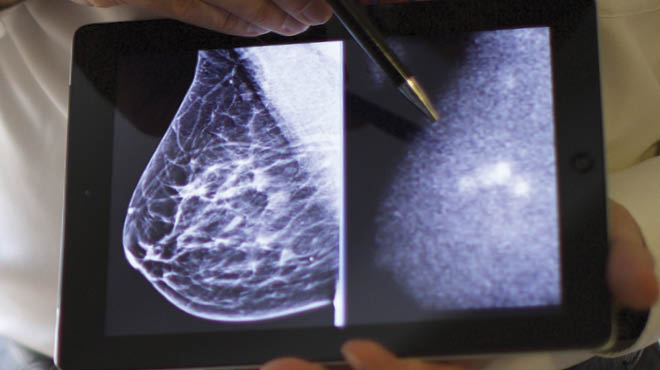



Dense Breast Tissue What You Need To Know Mayo Clinic Health System




Breast Cancer Seattle Cancer Care Alliance




Automated Whole Breast Ultrasound Barbara Hayden Dense Breasts



Blog How Dense Are You New Research Shows That Not All Dense Breasts Pose An Increased Cancer Risk




Diagnostics Free Full Text The Role Of Ultrasound In Screening Dense Breasts A Review Of The Literature And Practical Solutions For Implementation Html
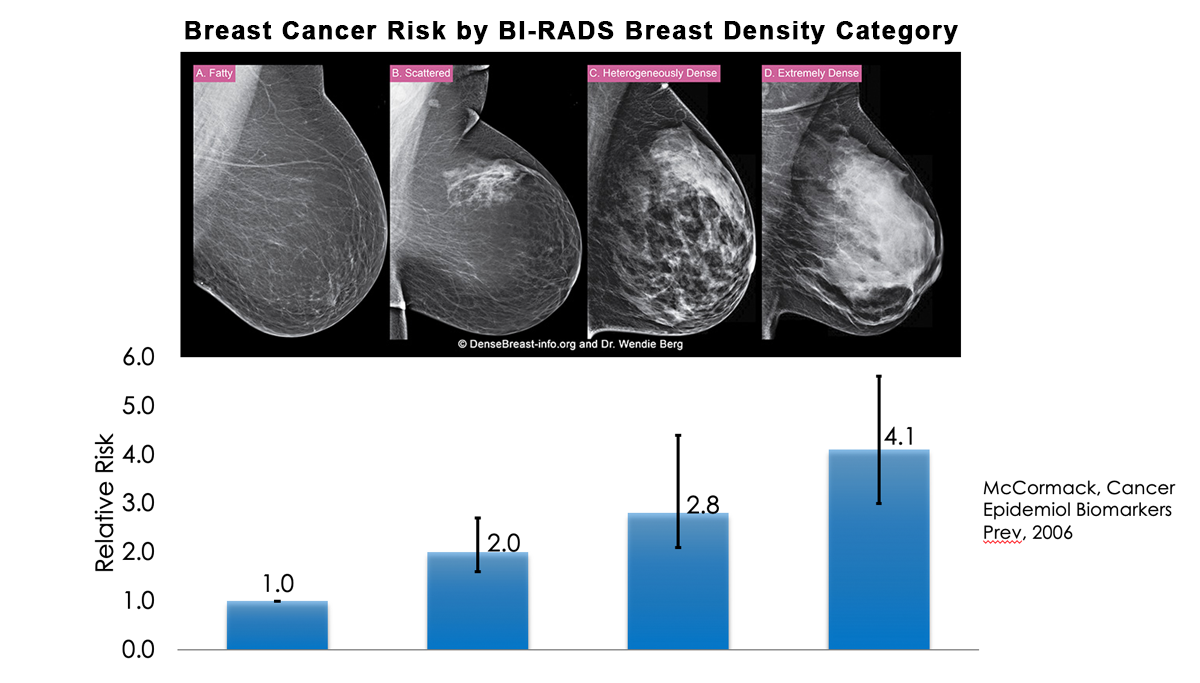



Health Care Provider Faqs Densebreast Info Inc




The Relationship Between Breast Density Age And Mammographic Lesion Type Among Chinese Breast Cancer Patients From A Large Clinical Dataset Bmc Medical Imaging Full Text



Some Example Mammograms Showing Various Birads Density Classification Download Scientific Diagram




Breast Density Consulting Radiologists




Breast Density What S All The Fuss About The Medical Republic




Breast Density Canadian Cancer Survivor Network




Breast Density Bi Rads Classification Moose And Doc




Advocating Breast Density Imaging Technology News




Breast Density And Mammogram Reports Dense Breast Tissue




Cancers Free Full Text Current Landscape Of Breast Cancer Imaging And Potential Quantitative Imaging Markers Of Response In Er Positive Breast Cancers Treated With Neoadjuvant Therapy Html
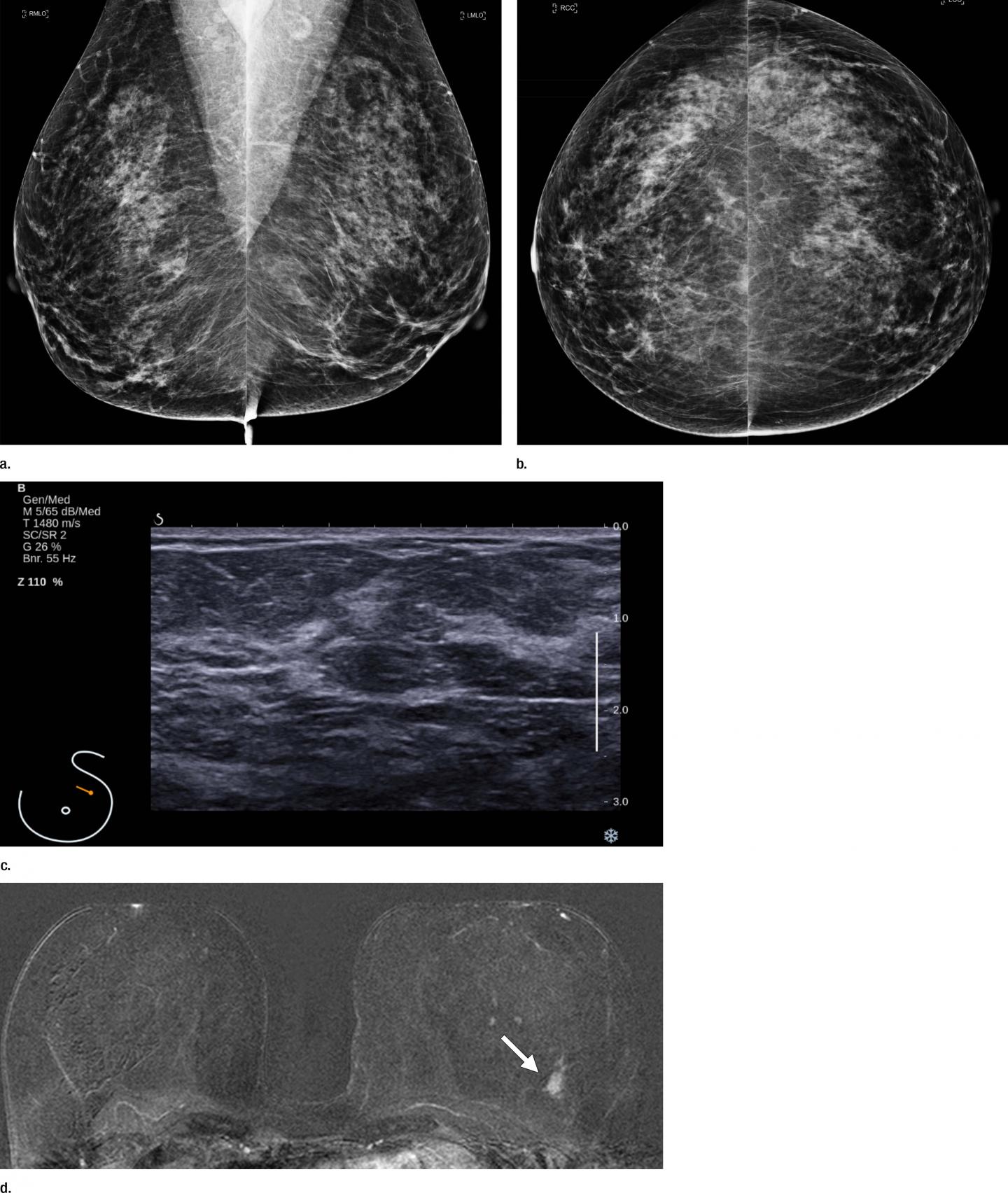



Screening Mri Benefits Women At Average Risk Of Breast Cancer Imaging Technology News
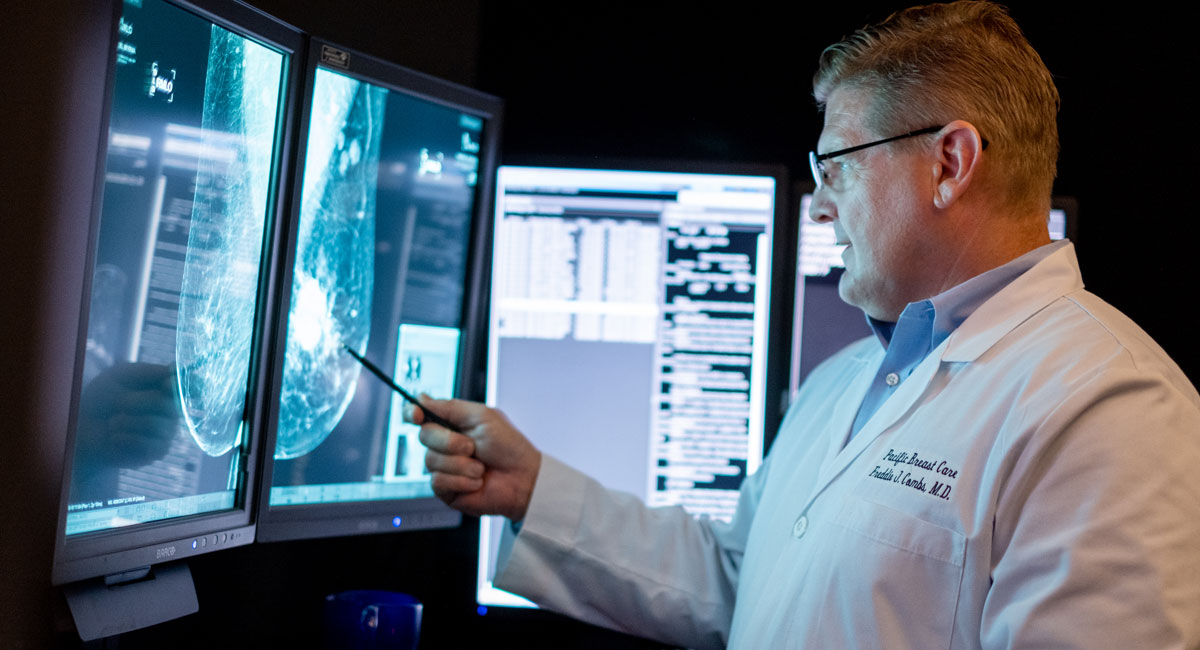



How Breast Density Affects Cancer Risk Uci Health Orange County Ca




The Four Breast Parenchymal Patterns Notes A Fatty B Scattered Download Scientific Diagram




Don T Leave It To Chance This Risk Assessment Could Change Your Breast Care Ge Healthcare United States



3
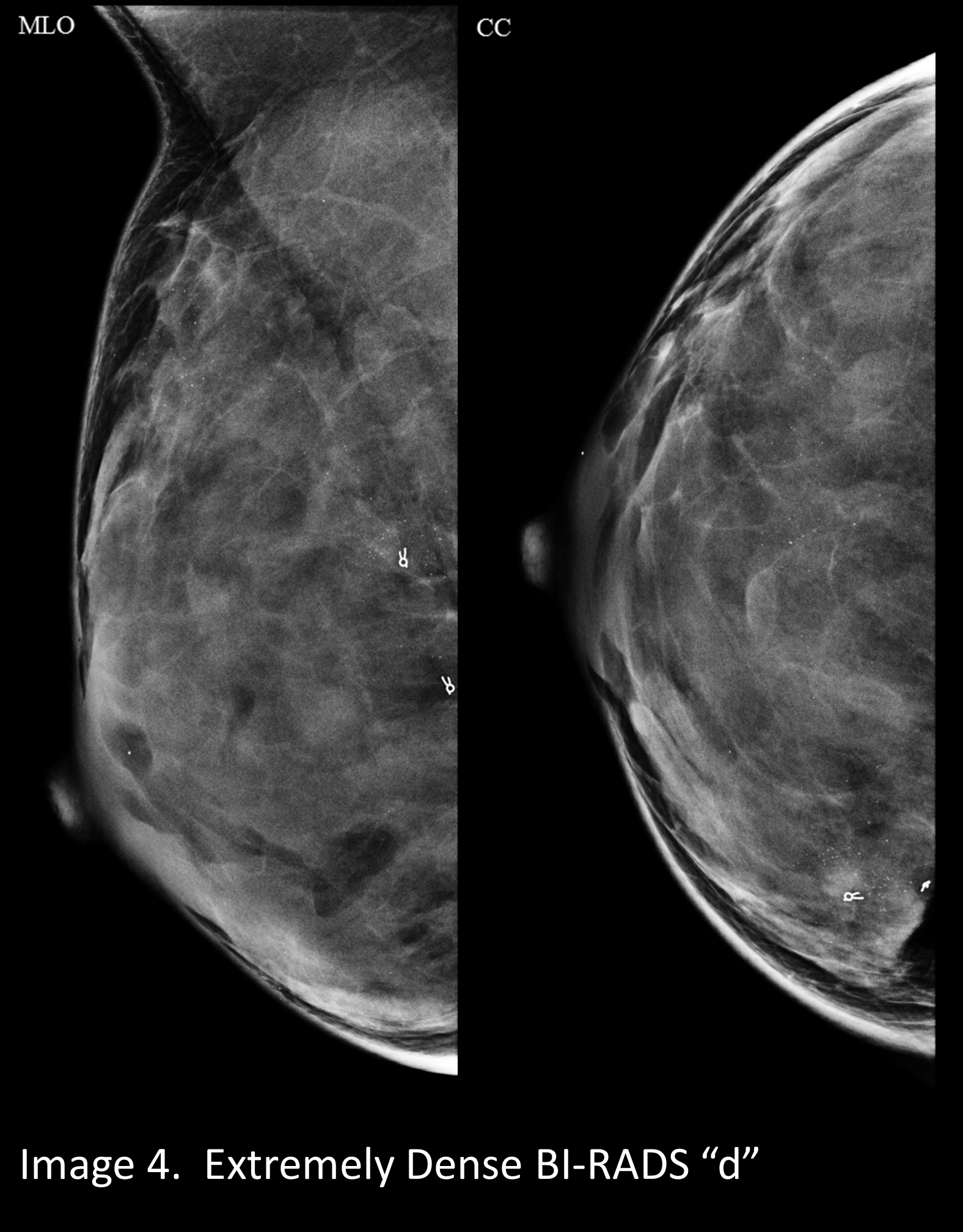



Your Patient Got A Dense Breast Notification With Her Mammogram Report What Are You Supposed To Do Christianacare News



What Breast Density Means To You Stacey Vitiello M D




Breast Density Canadian Cancer Survivor Network



Breast Density Guidelines




Breast Density Notification Law Info For Medical Professionals Healthcare And Medical News For Atlanta Physicians




Dense Breasts Advocacy Science And Cancer Dr Elisabeth Poorman




Breast Density What Is It And What Does It Mean For Me Breast360 Org The American Society Of Breast Surgeons Foundation




Ny Law Following Mammography Physicians Must Notify Of Breast Density Urmc Newsroom




What S The Best Way To Screen Dense Breasts




What Should You Know About Breast Density Breast Cancer Awareness Month Women S Health Research Institute




Get Informed Dense Breasts Canada Find Out Your Breast Density




Advice For Breast Cancer Awareness Month Know Your Breast Density Urmc Newsroom




Dense Breast Tissue And Breast Cancer Risk



1




Breast Density And Mammogram Reports Dense Breast Tissue




Telling Women They Have Dense Breasts Could Save Lives Says Cancer Survivor Cbc Radio



What Breast Density Means To You Stacey Vitiello M D




Should You Worry About Dense Breasts Everyday Health




Women With Dense Breasts May Not Need More Screening Uc San Francisco




Dense Breasts Are You Educated Link




Get Informed Dense Breasts Canada Find Out Your Breast Density




Breast Density Explained Imaging Technology News




Dense Breast And It S Cancer Connection By Noah Steves Issuu




Fibroglandular Densities Mammographic Breast Density Itn




Dense Breast Clinic Cooper University Health Care




Patient Questions And Answers Densebreast Info Inc
コメント
コメントを投稿